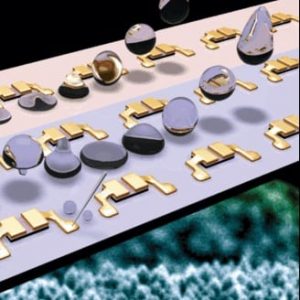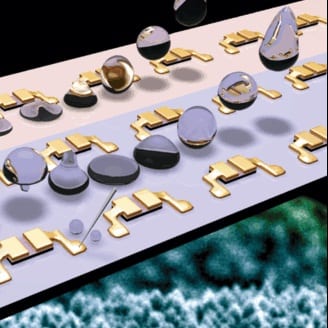 One of the worst things about being a techno-junkie is the constant, nagging fear of breakage. Your hard-earned pennies have purchased the device of your dreams, but what if you drop it, or bash it against the wall, or jam it in a drawer? I must admit, I’m obsessively careful with my toys, so the one thing I fear most is rain. As a Scot, this is a shameful thing to admit, but I have been caught out by deluges a few times, and always endured a tense few moments drying off my gear and hoping all would be well. One time, having been caught in a thunderstorm on the way home from the lab, my flatmate’s minidisc player (short-lived tech, but very cool at the time) got completely waterlogged. He stuck it in the lab vacuum line the next day and dried it out, and it was fine, but for most folks, that isn’t a solution available to them, and an unfortunate brush with a puddle or a thundercloud can really ruin your smartphone’s day.
One of the worst things about being a techno-junkie is the constant, nagging fear of breakage. Your hard-earned pennies have purchased the device of your dreams, but what if you drop it, or bash it against the wall, or jam it in a drawer? I must admit, I’m obsessively careful with my toys, so the one thing I fear most is rain. As a Scot, this is a shameful thing to admit, but I have been caught out by deluges a few times, and always endured a tense few moments drying off my gear and hoping all would be well. One time, having been caught in a thunderstorm on the way home from the lab, my flatmate’s minidisc player (short-lived tech, but very cool at the time) got completely waterlogged. He stuck it in the lab vacuum line the next day and dried it out, and it was fine, but for most folks, that isn’t a solution available to them, and an unfortunate brush with a puddle or a thundercloud can really ruin your smartphone’s day.
Lucky for me then that a team of researchers in Pohang, Korea, is looking into the possibility of producing water-resistant electronics, in research featured on the inside cover of the latest Advanced Materials. Kijung Yong and his colleagues report on building a water-resistant ReRAM switching device using zinc oxide as the water-repelling construction material. Depositing ZnO nanorods on the device created a superhydrophobic surface similar to the one that imparts the lotus leaf with its water-repelling properties. Even after having water poured over it, the performance of the device remained stable. The memory switch was also flexible and transparent, so this process can be integrated into the existing state-of the art in electronics development. All in all, it’s definitely a cut above wrapping your phone in a plastic bag when it comes to protection from the elements.

















